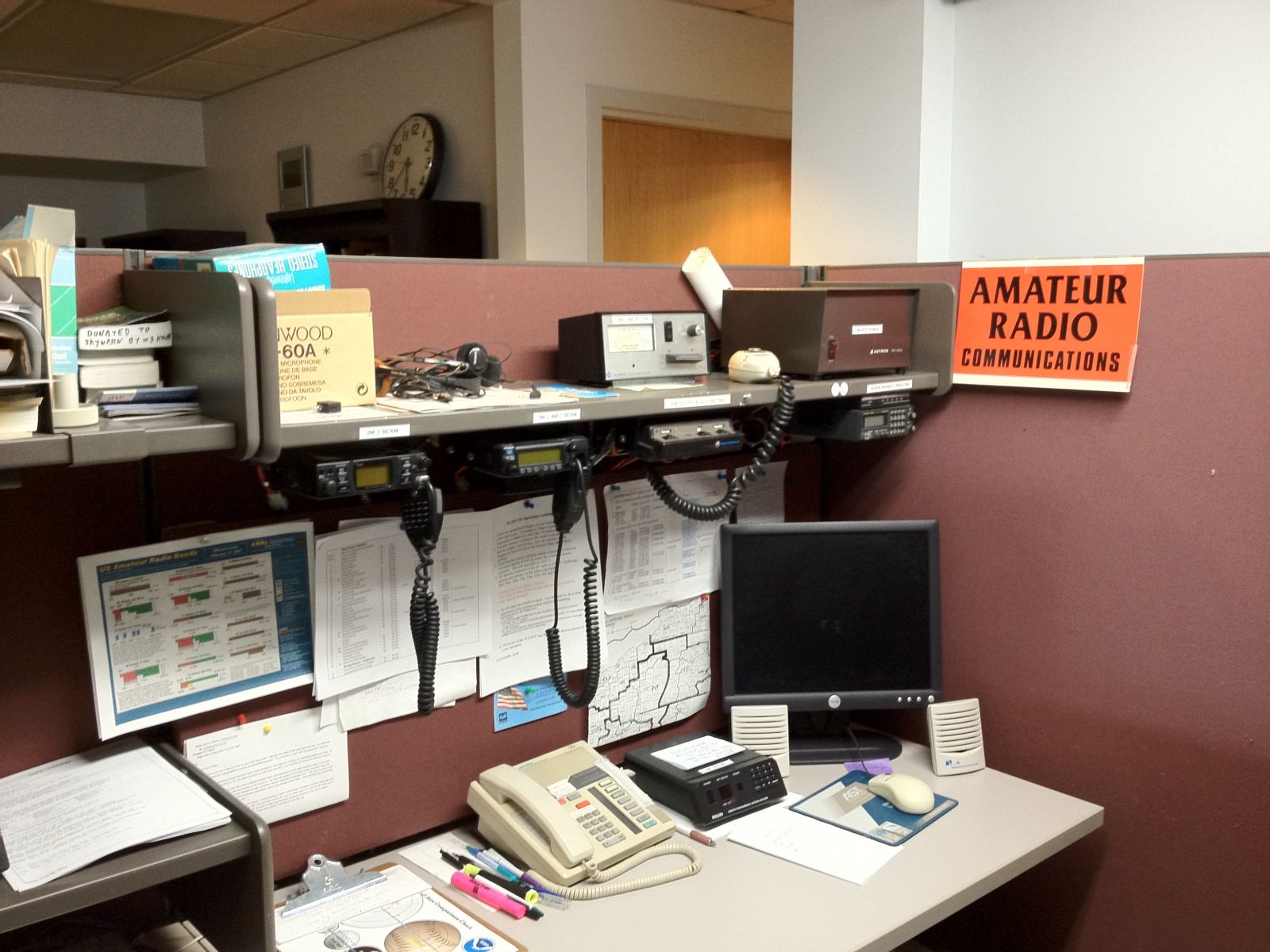Pittsburgh, PA
Weather Forecast Office
REPORTS FROM THE FIELD
Despite great advances in computer technology, sometimes nothing quite compares to a first-hand report. We know where its raining, and have computer guidance on when or where it should flood, but we cannot tell if flooding has already starting. Likewise, we know if its windy, but cannot tell if the winds have toppled trees, caused power outages, or damaged structures. However, since we're tasked with protecting life and property, we need to know this type of information. Thus, we have a network of volunteers called Skywarn spotters. Class participants take a 3 hour long introductory course offered by the NWS during which they are instructed on how to spot severe weather, and when to report items like thunderstorm damage and snowfall accumulations. If you are interested in learning more about our Skywarn Program, visit our Skywarn page by clicking here.
Obviously, all of our Skywarn observers are weather enthusiasts. A good percentage of them are also amateur radio operators. During large or major weather events, a ham radio operator comes to the office to work the console pictured above, which is located at the edge of the operations floor. Thus, we gain additional information on the weather's impact in real time, helping us make warning decisions.
If you are interested in information about our Ham Radio program, visit our Ham Radio page by clicking here.
Forecast
PIT Weather Radio
PIT Hydrology
Sun/Moon
National Fire Weather
Severe Weather
Hurricanes
River/Stream
National Marine
National Aviation
Graphical
Discussions
NBM 1D Viewer
Astronomical Data
PIT Fire Weather
PIT Aviation Page
Enhanced Hazardous Weather Outlook
Hydrology
PIT Hydrology Page
Ohio River Forecast Center
National Office of Water Prediction
Reports
Winter Weather
Report Severe Weather
Local Storm Reports
Public Information Statement
Climate
Past Weather
PA State Climatologist
Climate Predictions
Past Events
Local Climate Page
Skywarn
Skywarn Page
What is Skywarn?
Skywarn Meetings
Ham Radio Frequencies
Ham Radio Program
Weather Safety
NOAA Weather Radio
Pittsburgh Weather Radio
Brochures
FEMA
Red Cross
Damage/Fatality/Injury Statistics
Thunderstorm Safety
Air Quality
Winter Safety
Turn Around Don't Drown
Flood Safety
Tornado Safety
Lightning Safety
Heat Safety
Storm Ready
UV (Sun) Safety
Office Programs
Pittsburgh Facebook Page
Pittsburgh X Feed
CoOP
Meteorological Calculator
Online Office Tour
Social Media Feeds
Office History
NWS News
Events
NWS News
Pubs/Brochures/Booklets
Social Media
Organizational Information
About
Glossary
Products and Services
National Centers
NOAA International
Contact Us
US Dept of Commerce
National Oceanic and Atmospheric Administration
National Weather Service
Pittsburgh, PA
192 Shafer Road
Moon Township, PA 15108
412-262-2170
Comments? Questions? Please Contact Us.


